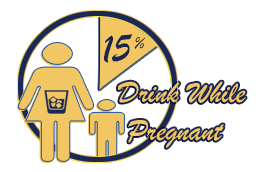The Connection between Post-Partum Depression and Substance Abuse
This article discusses the relationship between postpartum depression and substance use disorders. The information herein is designed to only be used for educational purposes only and cannot be used to form any type of diagnostic impression or treatment program. Anyone concerned that they, or someone else, have a psychological/psychiatric disorder should consult with a licensed mental health care professional.
Depression
Everyone experiences transient sadness associated with some particular distressing event. Some individuals may experience feelings of sadness and not be able to understand why they are experiencing these feelings. For the vast majority of people, these occasional issues with sadness or depressed mood resolve rather quickly or when the situation that is associated with them has passed. Normal variations in mood do not qualify as formal psychiatric/psychological disorders. The clinical notion of what constitutes a disorder is quite different than the day-to-day fluctuations in mood that most people experience.
Depression is a clinical syndrome that has several reliable signs/symptoms that can be assessed by trained healthcare professionals. In addition, nearly any type of psychological/psychiatric disorder will include some level of depressed mood. Ascertaining whether one has a formal depressive disorder, a different psychiatric/psychological disorder that includes aspects of depression, or is just experiencing relatively normal variations in mood requires expert training.
There are a number of different medical conditions that can result in the development of a clinical syndrome of depression. Some of these may involve reactions to being ill, and others may actually be due to the physiological effects of the medical condition, such as what occurs often in individuals who have strokes. One such condition occurs in women following the birth of a child.
Postpartum Depression
According to the book Postpartum Depression: Causes and Consequences, postpartum depression can affect women who have given childbirth between two weeks and the year following the birth of their child. The American Psychiatric Association (APA) includes postpartum depression in their list of depressive disorders; however, it is formally diagnosed as a subtype of major depression. According to APA, the symptoms of postpartum depression are similar to the symptoms of major depressive disorder and also include other symptoms, such as not wanting to care for one’s child, anger directed at one’s partner or child, and resentment about becoming pregnant.
An individual who has postpartum depression would formally be diagnosed with a major depressive disorder with peripartum onset, according to APA diagnostic criteria.
In order to receive a formal diagnosis of major depressive disorder, an individual must consistently demonstrate five or more specific diagnostic criteria (symptoms/signs) for a period of at least two weeks. One of the five symptoms must include depressed mood and/or a significant loss of one’s interests (or an inability to experience pleasure). As with all APA diagnostic criteria, the symptoms displayed cannot be due to the use of drugs or be better explained by the effects of a medical condition.
The major types of symptoms that are used to diagnose major depressive disorder include:
- Displaying depressed mood most of the time nearly every day
- Having significant feelings of guilt or worthlessness nearly every day
- Displaying a loss of interest in things that were previously interesting nearly every day
- Displaying an inability to experience pleasure nearly every day
- Experiencing significant weight loss without attempting to lose weight, or alternatively significant weight gain without an overt attempt to gain weight
- Having problems with sleeping almost every day (not being able to fall sleep or sleeping more excessively than normal)
- Issues with thinking that include problems with concentration, memory issues, slowed speech and thought processes, and issues making decisions that represent a change from normal level of functioning
- Moving slowly almost every day, or being highly irritable and restless nearly every day
- Feeling extremely fatigued nearly every day
- Having recurrent thoughts about death, dying, or self-injury, including suicidal thoughts or even suicide attempts
Specific Issues with Postpartum Depression
Postpartum depression is a manifestation of a clinical syndrome of major depressive disorder. Thus, it would differ from what many individuals experience as the “baby blues” in that postpartum depression is far more severe and results in a prolonged period of issues with normal functioning. However, women who have issues with anxiety and even experience the baby blues (short, less intense periods of sadness associated with being pregnant or giving birth) are at risk to develop postpartum depression. Nearly half of these episodes actually begin prior to the person giving birth to the child, and this is why the APA refers to postpartum depression as depression with peripartum onset (although this article will continue to use the more familiar term). The most common time for the development of these symptoms is within the first week to first month following the delivery of the child.
According to APA, there also instances where individuals with postpartum depression experience symptoms similar to bipolar disorder (alterations between depression and mania) and even psychosis (hallucinations, delusions, and other symptoms that signify that the person has lost contact with reality). If an individual has a postpartum depressive episode

with psychotic features, they are far more likely to develop similar experiences following subsequent pregnancies and deliveries. This complicates family-planning and long-term treatment implications for women wishing to have additional children.
Figures indicate that postpartum depression may occur in up to 15 percent of mothers; occurs at equivalent rates across income level, age, and ethnicity; and is more likely to occur in mothers who have a history of depression or bipolar disorder. Other risk factors include experiencing stressful events before childbirth, the mother having mixed feelings about the pregnancy, or the mother perceiving that she lacks support from family or from her partner. It is generally believed that postpartum depression is also associated with levels of fluctuating hormones and neurotransmitters that occur as a result of other potential medical issues and with pregnancy and/or the delivery of the child.
Postpartum Depression and Substance Abuse

When an individual is diagnosed with a psychological/psychiatric disorder and a co-occurring substance use disorder, the phrase co-occurring disorders is commonly used to describe the situation. According to APA, having a diagnosis of depression is associated with the development of co-occurring substance use disorders by means of a number of different processes. This is no different for women who are diagnosed with postpartum depression.
The Substance Abuse and Mental Health Services Administration (SAMHSA) has reported that nearly 15 percent of women who are less than a year from the birth of their child and had postpartum depression engaged in binge drinking, whereas nearly 9 percent of this group reporting abusing other drugs. These prevalence rates are higher than women who did not give birth or who did give birth but did not have postpartum depression.
There is still a lack of research that examines the overall causal relationship between substance use disorders and postpartum depression; however, it is well known that the combination of depression and substance abuse can lead to an increased rate of neglect and child abuse in these situations. These factors make the importance of recognizing these syndromes in women who have given birth and treating them even more crucial.
Treating Co-occurring Postpartum Depression and Substance Use Disorders
The treatment of co-occurring disorders is complicated and requires the participation of a multidisciplinary treatment team to address the specific issues involved in each individual case. There are well-developed treatment protocols for depression, substance use disorders, and co-occurring depression and substance use disorders that offer blueprints for the treatment of any individual; however, the treatment protocol must also be individualized to fit the particular situation. No two cases are exactly the same.
The use of an integrated treatment protocol is strongly suggested in the treatment of individuals who suffer from postpartum depression and substance use disorders. Integrated treatment is an approach that utilizes a multidisciplinary team of many different mental health professionals and other treatment specialists to address every specific issue regarding the particular case and to help the individual become as functional and independent as possible.

Integrated treatment protocols address both immediate and long-term needs and are made available for the individual on an ongoing basis for as long as the person needs treatment. An integrated treatment protocol includes all of the treatment approaches that are necessary to effectively address the individual case. This includes:
- Withdrawal management, if needed.
- Medications for depression, substance abuse, and any other psychological or medical conditions.
- Medical treatment for any medical conditions.
- Individual and/or group therapy for depression, substance abuse, and any other conditions
- Family counseling, if needed
- Psychoeducational services as required by the specific case
- Participation in social support groups such as 12-Step groups when these are appropriate for the individual
- Case management services, as needed
- Other specialized forms of counseling or treatment, as needed (e.g., social work services, vocational rehabilitation, mentoring services, occupational therapy, etc.)
The goal of the integrated treatment program is to bring the individual to a level of independent functioning that is realistic for them and that allows them to continue to be as involved in all aspects of their lives as possible, including child-rearing. This includes extensive interventions designed at bringing the family together and assisting the individual in establishing future goals and attaining them in a realistic and productive manner.

